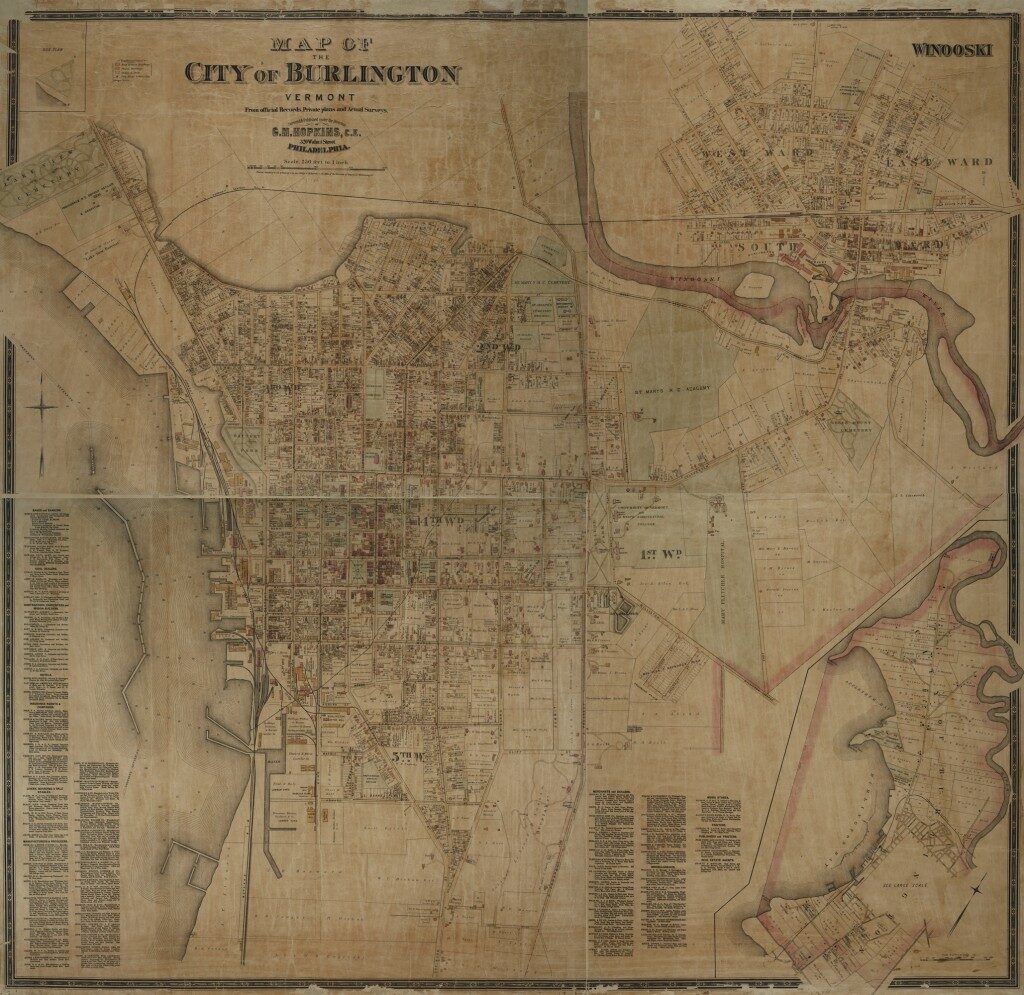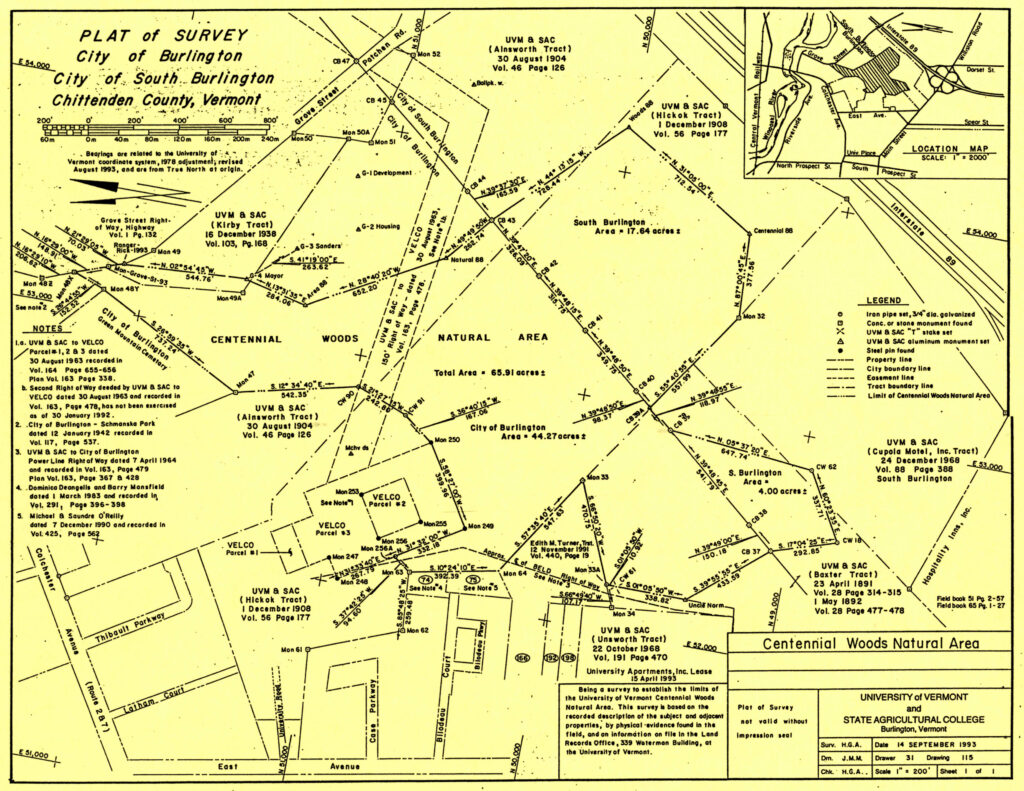Learning the history of a place can tell us a lot about the current status of that land. We can read the landscape by learning the trees and their ages and species, and look for any signs of humans like barbed wire fencing or stone walls. Just by walking through Centennial Woods it is easy to tell that this is not an old growth forest; the trees are young and the species found (maples and white pines) indicate the age of Centennial Woods. Some parts of Centennial woods display this young growth more than others, yet it is apparent when looking though history books that this has not always been a forest. The plot that I have been studying holds some large pines look to be very old but surrounding forests are younger growth.

According to old maps of Burlington, Centennial Woods was previously owned by C. Baxter Est., H. Stevens, Hickok Est., and the Ainsworth family. The librarian at UVM special collections informed me that the land was used as agriculture. I can also tell that from the barbed wire that have grown into the old trees and the rock walls that you can find throughout Centennial Woods. The presence of white pine, in plots like mine, help me detect the development of the forest many decades ago. Whine pins are successional species that start to grow after pastures and fields have been abandoned. From the human signs and the growth of the forest, I can assume that Centennial Woods was mostly agriculture land.

In more recent history, the University of Vermont purchased the land in 1974. The school utilized the land as a shooting range and outdoor educational classes. In the 1990s the land was changed to a natural urban area. Since then, it has been one of the biggest natural area in Burlington and has been a place for outdoor exploration for students and members of the community.
Citations:
Centennial Woods Natural Area. Burlington, VT: University of Vermont, 1993.
http://www.uvm.edu/~uvmsc/Centennial%20Woods/Centennial_Woods_Survey_1993.jpg (accessed December 02, 2014)
Hopkins, G. M. Map of the city of Burlington, Vermont: from official records, private plans and actual surveys. Philadelphia, Pa.: G.M. Hopkins, 1890.
http://cdi.uvm.edu/collections/item/Burlington_Hopkins_1890 (accessed December 02, 2014)
The Changing Landscapes of Centennial Woods Natural Area: A Field Guide [PDF]. University of Vermont Natural Areas. University of Vermont Environmental Program, http://www.uvm.edu/~uvmsc/Centennial%20Woods/Changing_Landscapes_Centennial_Woods002.pdf.